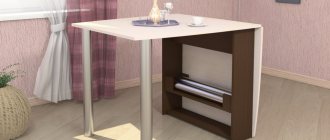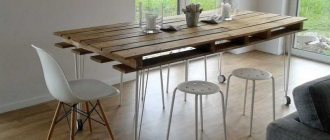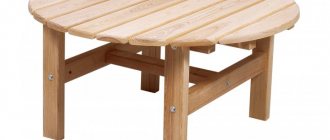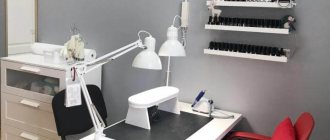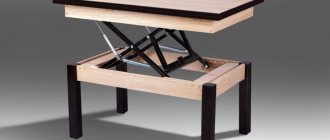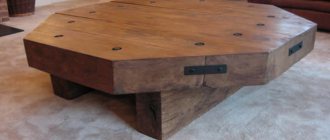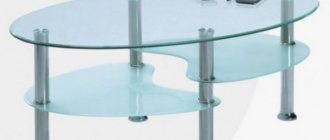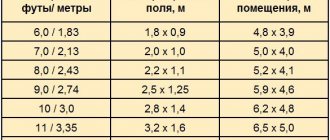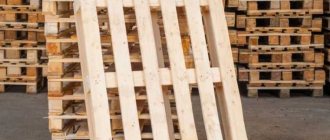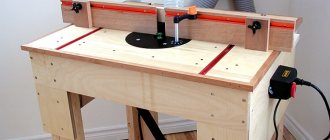More and more people are choosing a healthy lifestyle, and for good reason, because it is one of the companions to success. Therefore, table tennis has recently become very popular, especially among owners of summer cottages and country real estate. This dynamic sport requires extreme concentration, lightning-fast reactions, mobility, and excellent hand motor skills. However, ping pong is not only an ideal way to keep fit, table tennis is an exciting competition for passionate competitors. It's just a matter of small things - behind the mini-court. If the purchase of a net and two to four rackets is not able to make a hole in the family budget, then the purchase of basic equipment is guaranteed to provide it. Therefore, the question of how to make a tennis table worries many.
Types of tennis structures
Quite a large number of models have already been developed (or invented by people), in which everything is taken into account: the future location of the tennis table, the height, age of the players, the possibility of its transportation. Now there are the following types:
- Stationary tables for playing indoors. Their size may vary.
- Designs designed for outdoor competitions. They are characterized by a special coating that protects the tabletop from all the “jokes of nature.”
- Models that can be easily adjusted to suit the height of tennis players.
- Mini tables, due to their compact size, you can take them with you when going on vacation.
- Outdoor play structures are all-weather public equipment. The countertops of these models are made of concrete or shockproof glass.
- Universal designs - transformers that fold so that you can play tennis even alone.
Not all of these models can be made independently, but some original designs are not required for playing indoors or outdoors. In order to create a full-fledged tennis table without errors, it is better to start with the simplest type of this sports equipment.
Drawings and dimensions
- The product will depend on the space in which it is located and on the design - whether it is a stationary table or a folding one. It is worth remembering that players must move freely when playing. The width and length can be changed, but the height should remain unchanged.
- For a standard table, you can use the following dimensions: 274.3x152.5 cm, height – 76 cm. This option can be made in just a couple of hours at the dacha. The parameters are adjusted according to personal desire.
- Two sheets of plywood (152.5 cm wide) should be placed on top of each other. In the center between the sheets there is a transverse fastener for installing the mesh. Its width is 183 cm. The tabletop is 2 cm thick. There should be a distance of no more than 0.3 cm between the plywood sheets.
- The central fastening will protrude 15-20 cm from the edge of the tabletop. The legs are attached at four corners.
Getting to know the battlefield
All sports equipment has standard sizes. “International classic” for a tennis table:
- height - 760 mm (600, 680, 700 - for schoolchildren);
- length - 2740 mm (2440);
- width - 1525 mm (1220);
- mesh height - 152 mm.
There are also mini tables for children, equipped with adjustable legs. Their dimensions are 110x610x650 mm. Professional equipment has a tabletop thickness of 25-28 mm, for clubs the standard is different - 22-23 mm, amateur tennis has its own numbers - 16-19 mm. Outdoor equipment can be even thinner - 12-19 mm, but a certain value is still more popular - 18 mm. To avoid possible injuries to players, the persistent structure of the tennis table is always deepened inward: the distance from the edges of the tabletop is about 200-300 mm. This is a necessity, not a recommendation.
The tabletop must be perfectly level, otherwise the game will turn into torture. Before serious competitions, tables of only two colors are allowed - green (calming) and blue (more aggressive). Table tennis fans have a richer palette, including green, brown (usually made from waterproof plywood), gray and blue. The optimal surface is matte, giving less glare. Glossy tables have their own, not entirely sporty, “specialization”: they are used for exhibitions and presentations.
You also need to take into account the requirements for the sports ground. To guarantee a comfortable game, sufficient space is necessary. For amateurs, a tennis “court” should be at least 3500x7000 mm (5000x8000). Another important condition is a perfectly flat surface, since homemade amateur tables are usually not equipped with height-adjustable legs.
If the table is installed outdoors, then more attention will have to be paid to the site. It should not generate dust, and the sun should not interfere with rivals. The optimal place is one that is reliably protected from both sunlight and gusts of wind, because they can easily change the trajectory of an almost weightless ball.
You can also compare prices for tennis tables:
Guarantee
The manufacturing company provides a guarantee for the product only if the buyer followed the rules of operation and storage. The terms vary from six months to several years. A common option is a one-year and three-year warranty period.
The product warranty means free repairs at the manufacturer’s service center throughout the entire warranty period. Upon purchase, a warranty card with the date and stamp of the store is issued, this is the basis for providing repair services.
The buyer is given the opportunity to:
- return goods whose quality does not correspond to the declared one within the first 15 days after purchase;
- exchange the product for a similar one;
- receive warranty repairs during the warranty period;
- return the goods of proper quality within the first 14 days after purchase, if the appearance is not damaged, the packaging and documents are preserved.
The presence of a defect is determined by a service center expert. The defective model is replaced with a working similar one. If the buyer does not want to exchange the product, the purchase amount will be returned.
If the package is damaged (a part is missing), then the seller is obliged to provide the missing elements within three days.
Damage assessment during the warranty period is carried out at the service center. If it is determined that the damage was not caused by violation of the rules of operation and storage, the manufacturer will repair the product free of charge.
The warranty does not apply to the following situations:
- if the product serial number has been changed, removed or damaged;
- if a piece of equipment or an individual part is replaced with non-original components;
- if the manufacturer has changed the design;
- if the cause of the breakdown is improper operation.
Candidates for the role of tabletop
Building sports equipment is not too difficult. The question needs to be posed differently: how to make a tennis table of high quality, reliable, convenient, ideal? And in this case, the material that is chosen for the countertop comes to the fore. Typically, several types of raw materials compete for the role.
Plywood
This material, the range of which is very large, is suitable for the manufacture of folding models. Its advantage can be considered the absence of the need for additional surface treatment, which will take time and cost. When purchasing plywood (FB, FSF), you must choose grade 1 or 2, the product that is marked “Ш1”. It means that the material is polished on one side. The standard sheet width (1525 mm) is ideal for making a tabletop consisting of 2 halves.
Such material, unfortunately, has some disadvantages, the main one being sagging. To eliminate this possibility, a rigid box-shaped base with struts is made for the tabletop. Boards assembled into a structure using self-tapping screws will cope with its role.
Another disadvantage is the reluctant rebound of the tennis ball from such a table. It is corrected by applying a double layer of acrylic water-based paint to the surface of the plywood, each of them must be completely dry. The surface is first cleaned, puttied, and after the composition has dried, sanded. A bonus of all operations will be the improvement of the water resistance of the countertop.
Laminated plywood
A variety with such a coating is preferable because a tabletop made of laminated material will not be deformed. Its basis is moisture-resistant birch plywood, moreover, it successfully resists mechanical stress.
The undoubted advantage of this option is the ability to choose the color to your taste. A relative disadvantage is the higher price, but a tennis table made of laminated material will serve its owners much longer.
Chipboard (chipboard)
This is the second contender, often used to create fairly massive stationary sports equipment, but when choosing, you need to look only at high-quality materials. It is even better to purchase a laminated type of raw material. In order not to do unnecessary work, they usually buy a green or blue sheet.
The standard sheet size (1750x2750 mm) makes it possible to obtain a tabletop with minimal adjustment; it (as well as the processing of the ends) can be ordered upon purchase. The cost of such a tennis table will increase when compared to a plywood product, but this sports equipment will be more reliable and durable.
Fiberglass
This is a great option for an all-weather outdoor table. The optimal sheet thickness is 10 mm; a suitable shade can also be found. The advantages of fiberglass are high strength, but low weight of the material. Fiberglass is not subject to deformation, is not flammable, but despite all its good qualities, it has a drawback - high cost, but it is absolutely justified.
The base can be MDF (LMDF), OSB. For the role of frame and supports, boards, wooden beams or metal (corners, aluminum pipes) are often chosen, but the latter materials require special tools and equipment. Other, sometimes unusual, street candidates included:
- aluminum composite panels;
- concrete with self-leveling floor covering;
- plexiglass;
- flat slate;
- plastic sandwich panels;
- thick textolite;
- cement bonded particle boards.
The main requirement for an ideal material is to guarantee a standard rebound (or close to it) of a tennis ball. A ball released into “free flight” from a height of 300 mm should bounce off the table surface by 250 mm. This indicator should be the same on any part of the playing surface.
The desire to save money can ruin a tennis table that has not yet been made. If you buy a slightly curved or knotty beam, or buy corners made of tin (as a replacement for steel goods), then the sports equipment will turn out to be weak, unstable, and unreliable, so it is unlikely that you will be able to enjoy playing on it.
What about the little ones?
Children's tennis table
As for the cost of ready-made tennis tables, a story similar to folding ones is repeated with children's tables of reduced size. Branded children's tennis tables look elegant, no doubt about it, see fig. on right. But their prices, as they say, don’t even smell close to liberal-democratic values. But of course, all the best goes to children! And for the best there should be nothing to be sorry for. Principles are principles, and marketing is marketing.
Well, here too you can get out of the situation by making a children’s tennis table with your own hands, see fig. The design is simple, you don’t even need a commercial mesh. You can place this sports equipment on a regular table, on stools, a children's table, and in general on any stand. Or just on the floor. There are such fruits of the joint efforts of parents that he himself is little more than a racket, and already, puffing, he throws.
Drawings of a children's tennis table
About metal in a tennis table
Hobbyists who prefer plumbing rather than carpentry often make their own tennis tables from simple lengths of wooden beams connected by shaped steel fasteners, like those in Fig. Even a seasoned professional will not feel the difference in the oblique rebound from the same tabletop on such a table compared to a purely wooden one.
The design of the base of a tennis table on steel connectors
However, oddly enough at first glance, a wooden-steel table turns out to be less durable than a completely wooden one. Nobody plays while yawning and scratching themselves. And if you throw yourself into the table in excitement, the sharp edges of the connectors little by little cut the wood over and over again, and the table becomes loose. Round through steel fasteners do not give this effect, because... in a table of correct design, concentrated loads do not fall on the sharp edge of the metal or there is none at all.
"Oak" tables
It is also undesirable to make the base of the tennis table overly strong and massive, as in Fig. This is where the risk of injury comes into play. It’s better that the table moves from a player’s accidental “impact” and you have to correct it (which is also provided for by the rules of professional competitions), than to run into your belly on the edge of the tabletop, or worse, that below your stomach on its corner, and end up in the care of a traumatologist.
Overly strong and massive tennis tables
Tools, materials
To make an amateur tennis table, you need to prepare the following tools:
- roller with short artificial pile;
- marking tools;
- hacksaw;
- hand-held circular saw (jigsaw);
- level;
- screwdriver
You will need to purchase the following materials in advance:
- aluminum corners (for edging);
- antiseptic;
- white spray paint;
- timber (50x50 mm) for legs, alternative - furniture legs with adjustable height;
- timber or boards for the frame (25x100 mm);
- wood glue (carpentry glue, PVA for wood);
- brackets for attaching legs - 4 pieces;
- plywood (2 sheets) or chipboard (one), thickness - 18 mm;
- masking tape;
- sandpaper;
- steel corners;
- thin rubber (pieces of leather);
- construction tape;
- self-tapping screws, their maximum length is 15 mm.
For indoor play
According to the table manufacturing diagram, you will need:
- legs (8 pcs.);
- crossbars (4 pcs.);
- lateral ligaments and spacers (2 pcs.);
- clamps (8 pcs.);
- countertops (2 pcs.);
- hinge plate, brackets, axle (8 pcs. each) and lugs (16 pcs.).
On the World Wide Web it is not difficult to find photographs of a tennis table with a step-by-step explanation of how to assemble such a product.
Creating a tennis table
The work begins with the manufacture of its elements.
Tabletop
If the sheets of material were not prepared at the time of purchase, then this step is performed independently. Blanks (two for plywood and one for chipboard) are cut out using a hand-held or stationary circular saw. “Interference” with a jigsaw when first getting acquainted with it is highly discouraged, therefore, to master the tool, you first need training on some auxiliary (similar, but unnecessary) material.
Before surgery, the cut site is sealed with construction tape, which helps to significantly improve the quality of the cut. Then the Velcro is removed, and all edges are cleaned with sandpaper. The ends of the tabletop are treated: painted or pasted over, but a more suitable option is edging with aluminum corners.
Preparing elements
The first stage is cutting boards and/or timber into parts:
- longitudinal elements - 2 blanks of 2140 mm each;
- transverse - 2 parts 1025 mm each;
- legs - 4 pieces of 750 mm each, or 6 (+2 for the middle), for greater reliability.
The length of the legs requires a little explanation. If you add the thickness of the table top (18 mm), then the ideal height (760 mm) of the tennis table will not work, it will be larger. However, these excesses are necessary in the future for the alignment of the legs. Only after this operation are the allowances cut off. Each workpiece is carefully sanded with sandpaper, then treated with an antiseptic. Furniture supports can act as comfortable legs, allowing height adjustment. If the table is destined for a street fate, then it is better to replace the wood with a metal profile pipe.
Assembling the table frame
The blanks are used to assemble a wooden frame with a crossbar in the middle. Wooden elements are combined into half a tree or they give preference to the classics - “a tenon and a groove.” Self-tapping screws, steel corners, and metal plates are used as additional fasteners where the supports will be located.
Then the legs are installed. If a collapsible table is chosen, then brackets are mounted; the supports should fit into them quite tightly, but can be easily removed. To better distribute the load, metal plates are installed on the legs.
Connecting table parts
The tabletop is laid on a flat surface face down. A supporting structure is placed on it, and places for fastenings are marked. The frame is fixed with glue, the connection is reinforced with metal corners, evenly spaced along the entire perimeter of the frame (both external and internal), their maximum pitch is 300 mm. The corners are secured with self-tapping screws, then the product is left until the adhesive composition has completely dried.
The table is turned over, the product is transferred to its rightful place, and the horizontal playing surface is checked. If necessary, adjust the length of the legs (one or more). They are cut to a standard value with the same circular saw, or use a hacksaw. Rubber (leather) is glued onto the legs of a table that remains indoors to ensure better grip on the floor.
Bonus: DIY rackets
As a conclusion, we suggest you make a pair of tennis rackets yourself. , apply markings on a sheet of 4–6 mm plywood
- Draw a rectangle 20x160 mm.
- On the wide sides we add two semicircles with a radius of 80 mm.
- From the center of the figure we set aside one of the circles a rectangle 35x180 mm.
- We make a small joint at the base of the handle and cut out the workpiece with a jigsaw. On the handle we try on two strips of durable wood 6–7 mm thick, 35 mm wide and 100–110 mm long.
- We place them on PVA and squeeze them with clamps, then we process the handle and sawn ends of the racket with emery cloth until the chips are eliminated and an ergonomic shape is given.
Silicone mats (from kitchen utensils) or balsa wood can be used as a shock absorber. In the first case, the same hot-melt adhesive is used for fastening; in the second, concentrated PVA can be used.
First, apply glue to the racket, then place it on the edge of the sheet, press it and cut it along the edge of the plywood after drying.
Now all that remains is to secure the net and you can play.
Mini-court design
All elements of the tennis table are treated with a primer. If plywood was chosen, then the playing surface is painted, having previously been puttied, sanded after drying with sandpaper and treated with a primer. Use matte paint, which is applied in two layers, giving the first one enough time to dry. The painted table is left to dry for a long time - at least a day.
The last stage is marking. To edge the playing field, a white stripe of spray paint is drawn, its width is 20 mm; to divide the surface into halves of the opponents, a thinner line is used: its maximum thickness is 3 mm. The ideal evenness of this “possession” boundary is ensured by first gluing two strips of masking tape. Having decorated the table according to all the rules, install the mesh; you can make it yourself, but it is better to buy it ready-made in the store.
Minuses
Inconveniences are caused by the lack of transport rollers on the table, a thin tabletop and materials that cannot ensure a uniform rebound.
This drawback is found in outdoor products: melamine countertops are inferior in performance to chipboard, and metal edging disrupts the uniformity of rebound.
Operational problems arise in the following cases:
- there is no anti-reflective coating on the surface;
- the rollers are made of insufficiently strong material and cannot withstand weight;
- The tabletop material is fragile;
- the surface is uneven, damaged or deformed.
